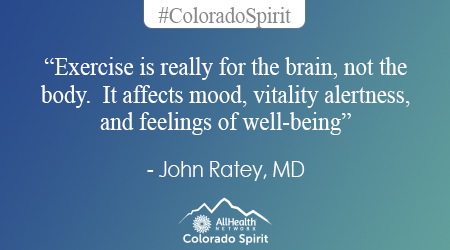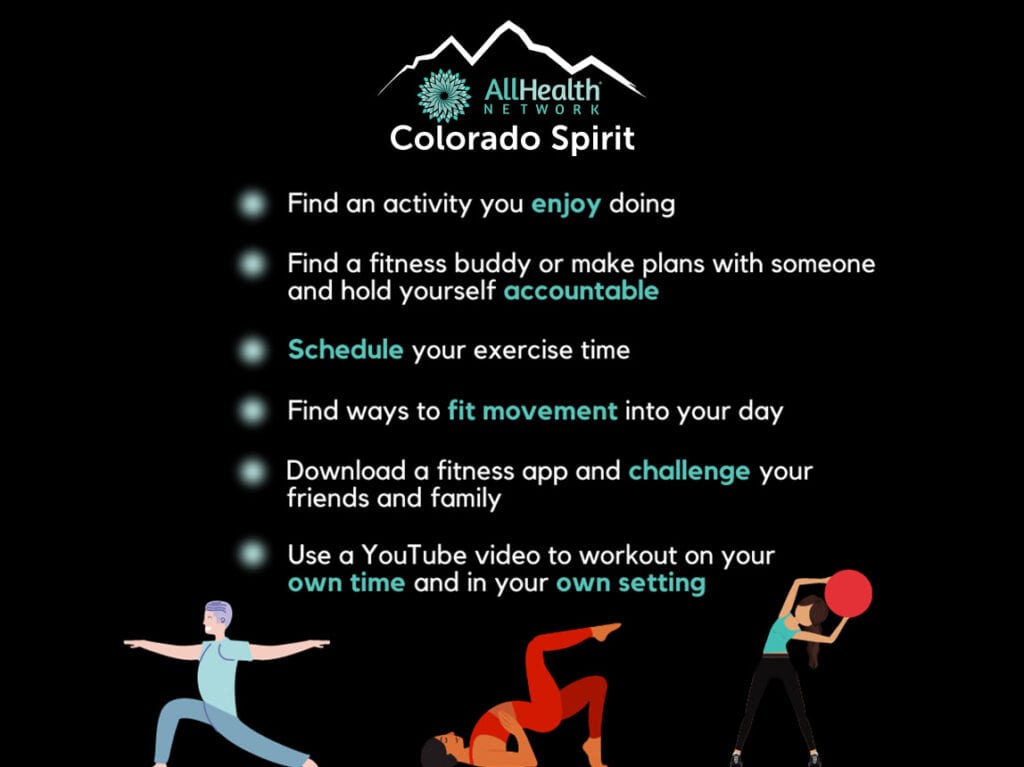Throughout past posts, we have tossed out the recommendation to “get moving” or “move your body” without taking too much time to dive into the reasons behind this recommendation. This week we wanted to share a few benefits of physical activity and some tips for how to incorporate this into your life if you are running into challenges.
The Benefits of Exercise
Here are just a few of the benefits of exercise that seem particularly relevant to the challenges many of us are facing during the pandemic.
- Exercise can help improve sleep – It can both help you fall asleep more quickly and improve the quality of your sleep.
This post explains some of the specific recommendations around timing and intensity of exercise that seem to support the best sleep - Exercise can fight depression and anxiety – Harvard Medical School describes some of the research around depression and exercise here and the relationship between anxiety and exercise
- Exercise can improve cognitive functioning – by impacting memory, alertness, and activating the part of our brain that is responsible for executive functions like planning and weighing pros and cons. Dr. John Ratey explains why exercise is just as much for our brains as our bodies in his TEDx Talk
- Exercise provides stress relief – As the Mayo Clinic explains here, exercise can increase endorphin levels and give us the opportunity to concentrate on just one thing as opposed to our other stressors
Tips to Start Exercising
On a personal note, I know that when I exercise regularly I sleep better, my mood is more level, I am more patient with people around me, I have more energy, and I feel better about myself. Even with this direct personal experience, exercise can be a challenge right now. Exercise is not my favorite activity under normal circumstances, yet alone during a pandemic. So, what’s a person to do when the benefits of exercise are so clear, yet motivation, energy, and desire to exercise are low?
- Find an activity you enjoy doing – (or if you are like me…an activity you can tolerate). If running is not your thing, don’t make yourself run. Would a bike ride be more enjoyable? Not interested in lifting weights? Try a yoga class or stretching routine. There are even apps that allow you to gamify your workout. I do not enjoy running and typically complain loudly when someone suggests I run, but I can muster up some jogging and sprinting when being chased by zombies in the Zombies, Run!

- Find a buddy! – Being accountable to someone else for sticking with our plans to exercise is one of the biggest predictors of engaging in exercise. This article shares information about why fitness “buddies” are helpful and offers some helpful tips. Even if you don’t have an exercise buddy, making a plan to meet a friend for a hike or telling your kids you will play tag with them after dinner can create this accountability.
- Schedule your exercise time – (this includes actually putting it in your calendar) and hold your commitment to it the same way you would any other commitment. It is easy to just plan to exercise “later” and then run out of time.
- Find ways to fit movement into your day – For some of us, just finding ways to be active in our day is more effective than having a formal exercise routine. When I lived in an urban setting and used public transportation, I naturally walked throughout my day. If I had extra time and the weather cooperated, I could choose to walk an extra block or two to catch the bus. If you can make shifts in your routine to incorporate more movement, this may be a natural way to be more active without setting up a formal exercise routine.
- Are you a competitive person? – There are many fitness apps and websites that allow you to challenge friends and family. Check out a few examples here.
- Find a Youtube channel or Smartphone app – For some of us, the challenge right now may be comfort level going to the gym or engaging in group exercise. There are many apps and YouTube videos that allow you to workout in your own setting. If you’re interested in some simple yoga or stretching, check out Yoga With Adriene for high-quality, free online yoga videos. Many gyms are also offering video classes or outdoor workouts.
Whether you are a long-time fitness enthusiast who has just hit a wall lately or someone who has not been very active in the past, we know getting moving is a challenge. Having grace and compassion for yourself, starting small, and taking things one day at a time can help any of us ease into more physical activity.
Would speaking to someone help?
AllHealth Network, along with other community mental health centers, is continuing to provide services via telehealth and by phone. Our Crisis Walk-in Center remains open 24/7 and offers in-person care to those experiencing a mental health crisis. For more information and to get connected with our services, please call 303-730-8858. To learn more about what other community mental health centers are doing, please visit the Colorado Behavioral Health Council COVID-19 website.
If you are experiencing a mental health crisis and are in need of immediate assistance, please call the Colorado Crisis Hotline at 1-844-493-TALK (8255) or text TALK to 38255
How do you know if you’re experiencing a mental health crisis? Click here to learn about mental health crisis warning signs to look out for from the National Alliance on Mental Illness (NAMI)


